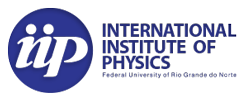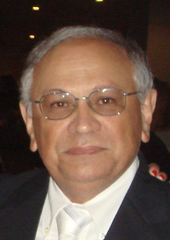The immediate future of pure and applied scientific researches undoubtedly points to the interconnection and complementarity between different areas. It is becoming increasingly less important to approach specific themes, as it was done up to the last century, among which we can highlight the foundations of Quantum Mechanics, the unveil of the molecular structure of DNA with all its consequences, the emergence of semiconductor devices based on silicon and its implication for microelectronics, and the development of purely synthetic drugs. The multidisciplinarity aspect of science, which is becoming more and more present, comes from the maturing of knowledge and the impressive speed of the scientific production, as an output from the performance of research groups in the most diverse areas of scientific knowledge.
In this context, the eld of Nanobiotechnology has emerged as one of the most important research area in recent years. Although scientists still face great difficulties in controlling and manipulating structures at the nanoscale, nature has been performing these tasks with great precision and high efficiency using biological molecules, such as the nucleic acids (DNA/RNA), amino acids and proteins. As a consequence, nowadays there is a great deal of interest to develop theoretical concepts and experimental techniques for self-organized biological systems in search of their technological applications. Biology, Physics and Chemistry, among other areas of knowledge, provide models and mechanisms to promote this approach.
Thus, the sophisticated molecular recognition of various natural biological materials has been used in the formation of a complex network of structures potentially useful for a variety of optical, electronic, biosensory and pharmaceutical applications. In fact, they o er solutions to many of the obstacles that need to be overcome, since they have the capacity for self-assembly and self-replication, making possible the production of nanostructures with an accuracy that is not feasible within the technologies found in materials science.
In the above context, we intend to present in this colloquium the main electronic, optical and pharmaceutical properties of some biological molecules and their interactions, using a theoretical/computational framework based on Quantum Mechanics. Investigation of electrical junctions, in which molecular assemblies formed by nucleic acids, amino acids, and proteins act as conductive links of traditional electrical components, will be discussed. Their diversity, versatility and responsiveness to control and manipulation, make them potentially important components not only in nanoelectronic bio-devices (like microRNAs in the early diagnosis of autism), but also as a crucial tool for the efficiency of medicinal drugs ingested by our body, via its binding with the human albumin. We also intend to discuss important aspects related to the biology of cancer using our immunological checking points, specialized proteins that act as brakes in the immune system, allowing it to recognize and attack more e efficiently only the cancer cells, avoiding the destruction of healthy cells as in conventional treatments.









